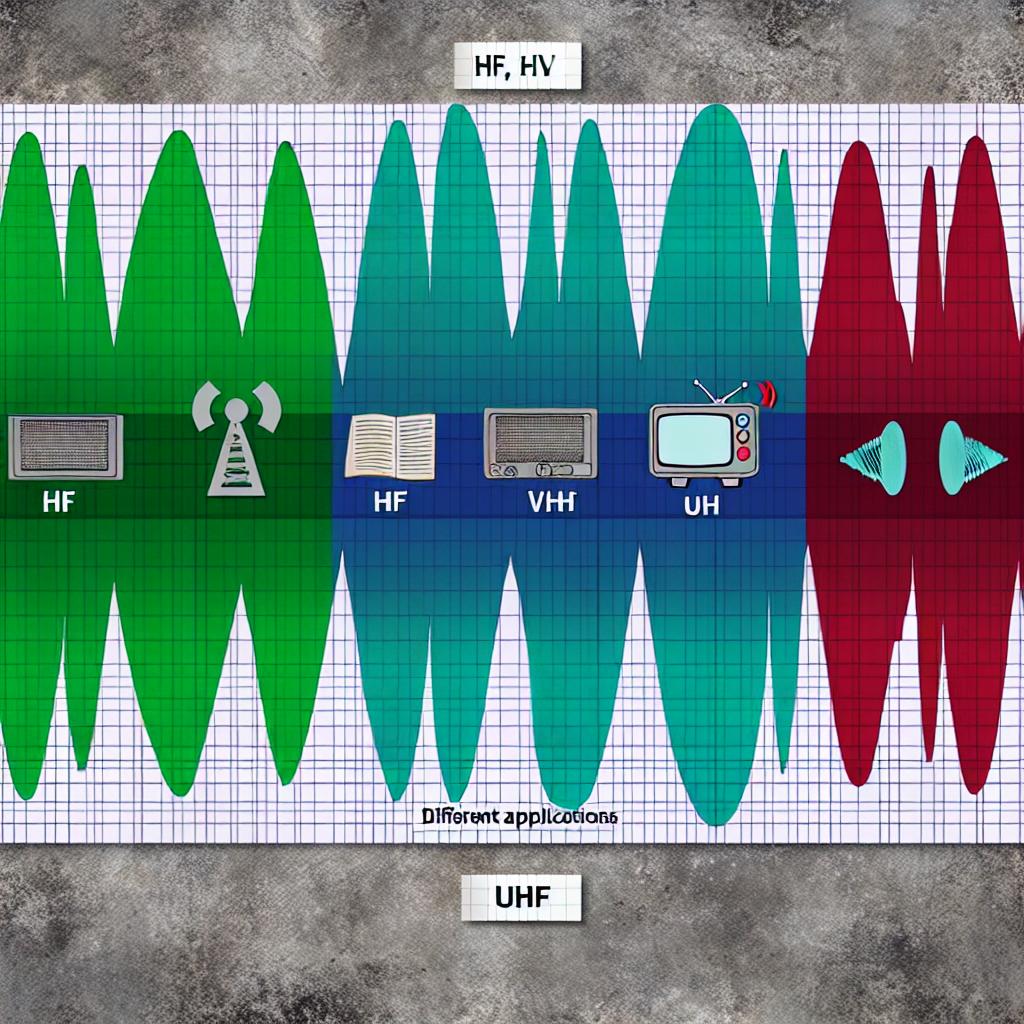Understanding HF, VHF, and UHF Bands
In the realm of radio communication, various frequency bands play pivotal roles, each offering distinct advantages and use cases. The High Frequency (HF), Very High Frequency (VHF), and Ultra High Frequency (UHF) bands have unique characteristics that render them suitable for a range of different communications. This document aims to provide a comprehensive understanding of these bands, their distinct characteristics, when each is used, and the factors that influence their effectiveness.
HF Band: Long-Distance Communication
The HF band comprises frequencies ranging from 3 to 30 MHz. This band is globally recognized for its exceptional ability to support long-distance communication. One of the most significant features of the HF band is its interaction with the ionosphere, which allows radio waves to bounce off and return to the Earth’s surface, a phenomenon known as ionospheric reflection. This reflection allows HF signals to travel well beyond the horizon, making this frequency band invaluable for communications spanning thousands of miles.
HF’s capability makes it indispensable in fields requiring extensive reach, such as marine and aviation services, where it supports seamless cross-country and trans-oceanic communication without satellites. Amateur radio operators, commonly known as “hams,” also utilize the HF band to communicate globally. In regions where internet or satellite communication might be unreliable or nonexistent, HF radios become essential for ensuring connectivity.
Given its ability to traverse long distances, the HF band has different applications under varying atmospheric conditions. For instance, daylight and seasonal changes can influence signal reflection off the ionosphere, making radio communication at these frequencies subject to certain levels of unpredictability, a factor operators must consider.
VHF Band: Line-of-Sight Communication
Spanning a frequency range from 30 to 300 MHz, the VHF band is prominently used for communications reliant on a clear line of sight. Unlike HF signals, VHF signals tend to go right through the ionosphere, which restricts their range. However, this characteristic also enables clearer signals over shorter distances, which makes VHF practical for a multitude of applications.
Commercial FM radio broadcasting often makes use of VHF due to its strong sound clarity over moderate distances. The TV broadcasting industry also frequently employs VHF frequencies, and two-way land mobile radios, used by emergency services and commercial fleets, leverage VHF for effective communication within a given area.
The utility of VHF further extends to air traffic and marine communication systems, wherein communication between different units relies heavily on maintaining direct visibility. VHF’s relatively lower susceptibility to atmospheric interference compared to HF also makes it reliable for these critical operations.
UHF Band: Short-Range High-Frequency Applications
Within the frequency range of 300 MHz to 3 GHz, the UHF band represents a different tier of radio communication. Offering even higher frequencies than VHF, UHF is tailored for short-range applications that nonetheless require reliable performance. UHF signals have a notable ability to penetrate buildings and other obstacles, making them particularly useful in densely packed urban settings.
The adaptability of UHF underpins numerous modern technologies, including television broadcasting, where they provide digital transmissions with a stronger resistance to interference. In the realm of personal communication, UHF frequencies empower mobile phones, offering viable signal penetration even within building interiors. GPS systems, due to their requirements for detailed precision over short distances, utilize UHF bands effectively.
Public service and emergency communications heavily depend on UHF, given that its short wavelengths accommodate the compact and efficient antennas essential for hand-held devices. Additionally, technologies such as Wi-Fi operate on UHF frequencies, contributing to its prevalence in contemporary devices and applications.
Propagation Characteristics
The propagation characteristics of these frequency bands establish their suitability for various scenarios. In the HF band, ionospheric interaction provides significant reach but might sacrifice clarity due to atmospheric conditions like solar flares affecting the ionosphere.
Conversely, the VHF band, with its line-of-sight propagation, delivers crystal-clear signals but typically demands an unobstructed path. Thus, physical obstacles such as tall buildings or natural formations like hills can hinder VHF effectiveness.
On the other hand, UHF’s succinct wavelengths allow signals to navigate through structural obstacles, with reduced effectiveness at long-range communication. Nevertheless, UHF’s ease of penetration is highly advantageous in metropolitan settings.
Choosing the Right Band
Selecting the appropriate frequency band necessitates considering numerous factors, including the intended communication range, environmental conditions, and equipment availability. Enthusiasts and professionals making informed decisions about HF, VHF, and UHF bands benefit by ensuring they employ the most appropriate methods and technologies for their specific use cases.
For professionals and hobbyists who wish to further explore these bands, numerous resources, including technical guides, offer in-depth information. Particularly, understanding frequency allocations and regulations is vital, echoing the need for adherence to standards set by bodies such as the Federal Communications Commission.
This knowledge serves as a foundation for achieving optimal performance, ensuring that users apply the suitable frequency band for their communication needs, whether it’s bridging large distances or operating efficiently in confined and obstacle-rich environments. Understanding the intricacies of HF, VHF, and UHF bands thus streamlines effective communication across diverse landscapes and circumstances.




